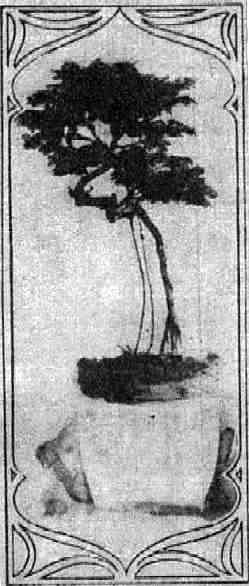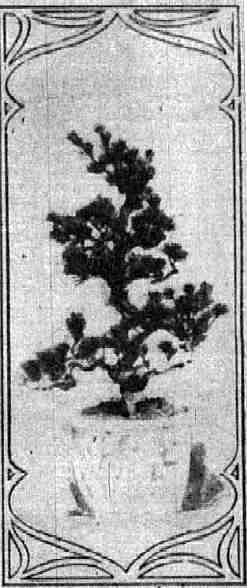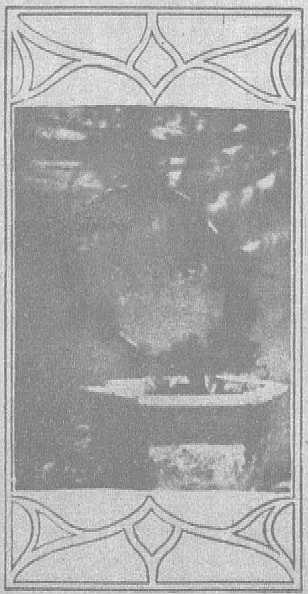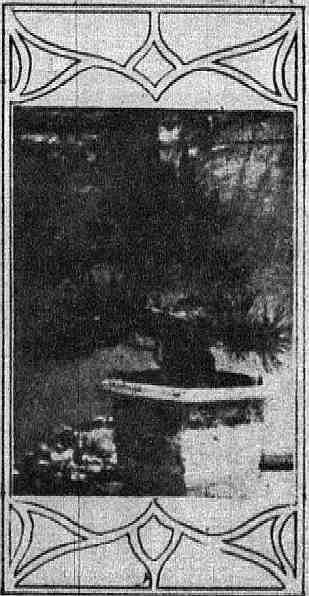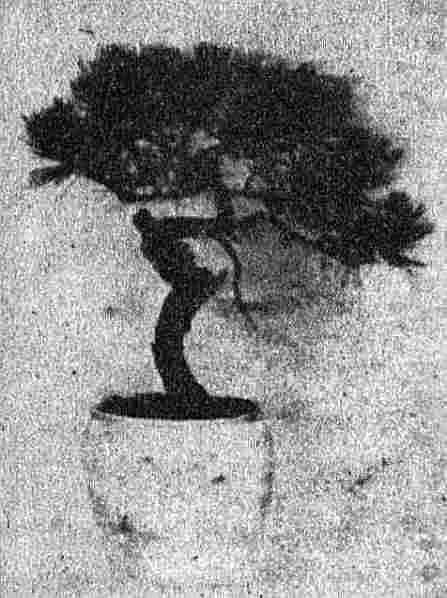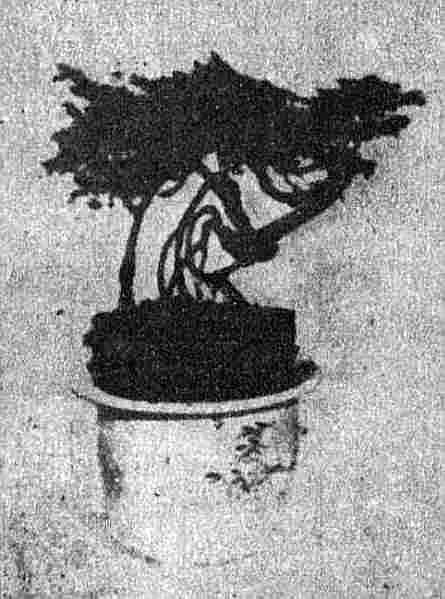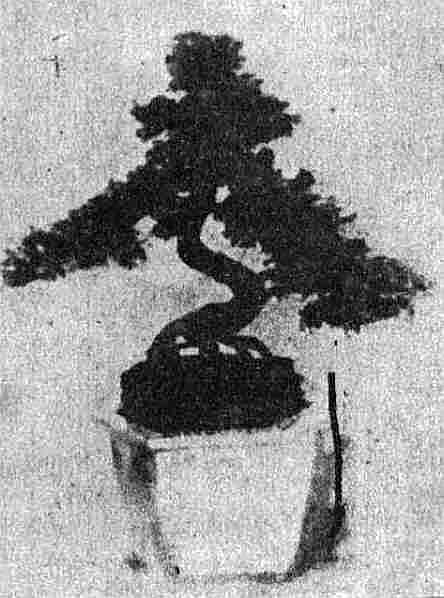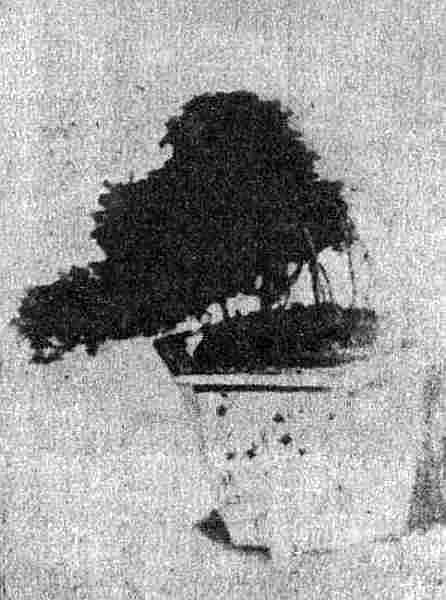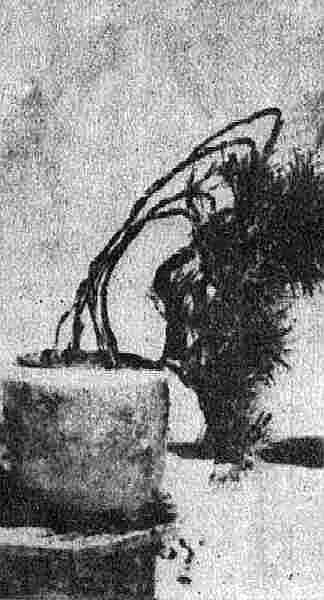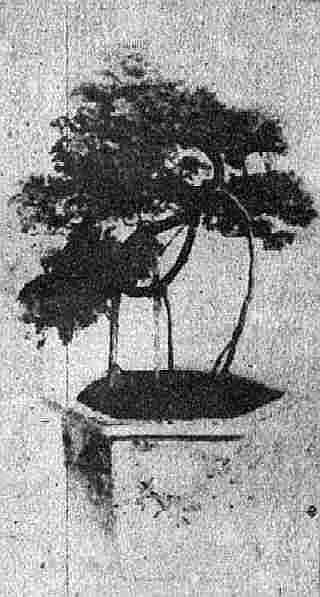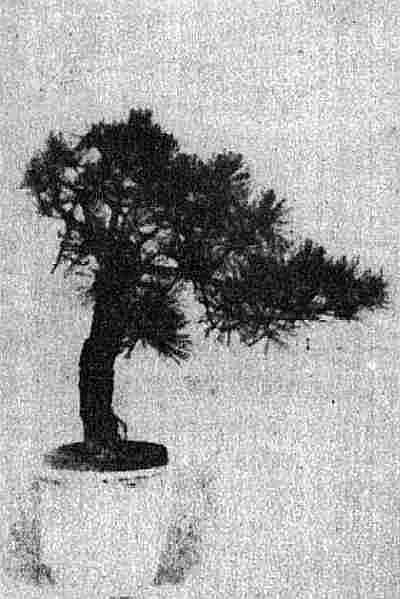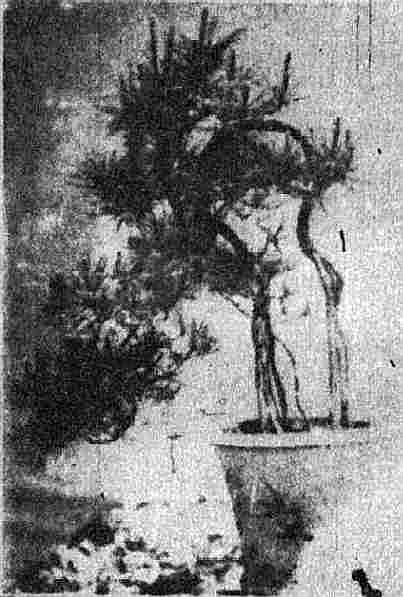| "Elfin Trees"
by Cornelia E. Bedford (1900):
In the endless variety of curious things Japanese,
their dwarf trees have aroused much interest. The Japanese have a
great love for gardening, and, just as they do everything – even to the
arrangement of flowers – carry on this work as a thoughtful, harmonious
art.
Grafting is an important feature of Japanese trees. As many as eight varieties of maple have been seen in one of these dwarfs. To speak of some actual examples of these miniature trees, one delightfully poetical little larch has grown around in a loop so as to represent a moon with fleecy clouds drifting over its edge. Another is a pine, whose roots are exposed and grow higher than the trunk. They bend over before the trunk begins; and it – contrary to the laws of pines – is made to grow down instead of up, and gnarled instead of straight. Neagari is the term given to a plant with exposed roots. Another of this kind, a pine also, simulates an arch. A rock is fitted in another and the roots trained to fasten themselves to it. One tree of the rather familiar variety, the Thuya obtusa, with roots exposed and trunk S-shaped, has been trained in the pyramidal or conical form known as Jikkei, or Jikka. This shape is intended for the centrepiece of a garden.
Then there are curious representations
of objects, like the spiral or corkscrew, a spider, a grasshopper, one
portraying the long-armed and short-legged man of the well-known Japanese
legend, and storks. An especially interesting stock is formed by
two trees of the Thuja squarrosa, the two trunks standing for the
legs of the bird, and low branches from one tree representing a tortoise
at the stork’s foot. Both these creatures are emblems of longevity.
A pine in the shape of a flag is said to be four hundred years old.
|
